Bài giảng Phương pháp kiểm tra và đánh giá học tập - Chapter 2: Approaches to language testing
Language tests are chronologically classified
according to four main approaches:
(1) the essay translation approach;
(2) the structuralist approach;
(3) the integrative approach; and
(4) the communicative approach(1) the essay translation approach
Characteristics:
No special skill or expertise in testing
Subjective judgment of teacher
Essay writing, translation & grammatical
analysis (comments about the language)
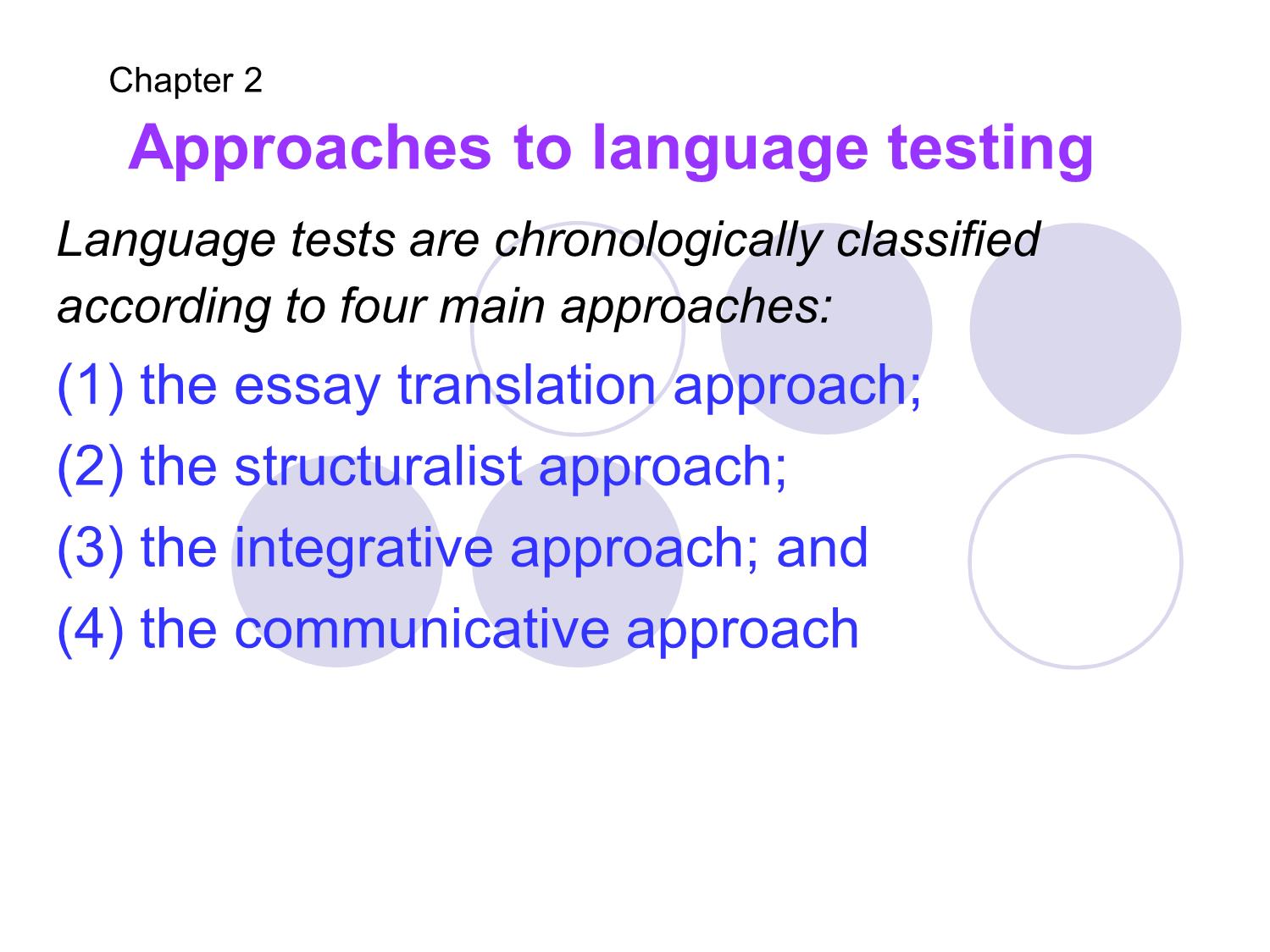
Trang 1
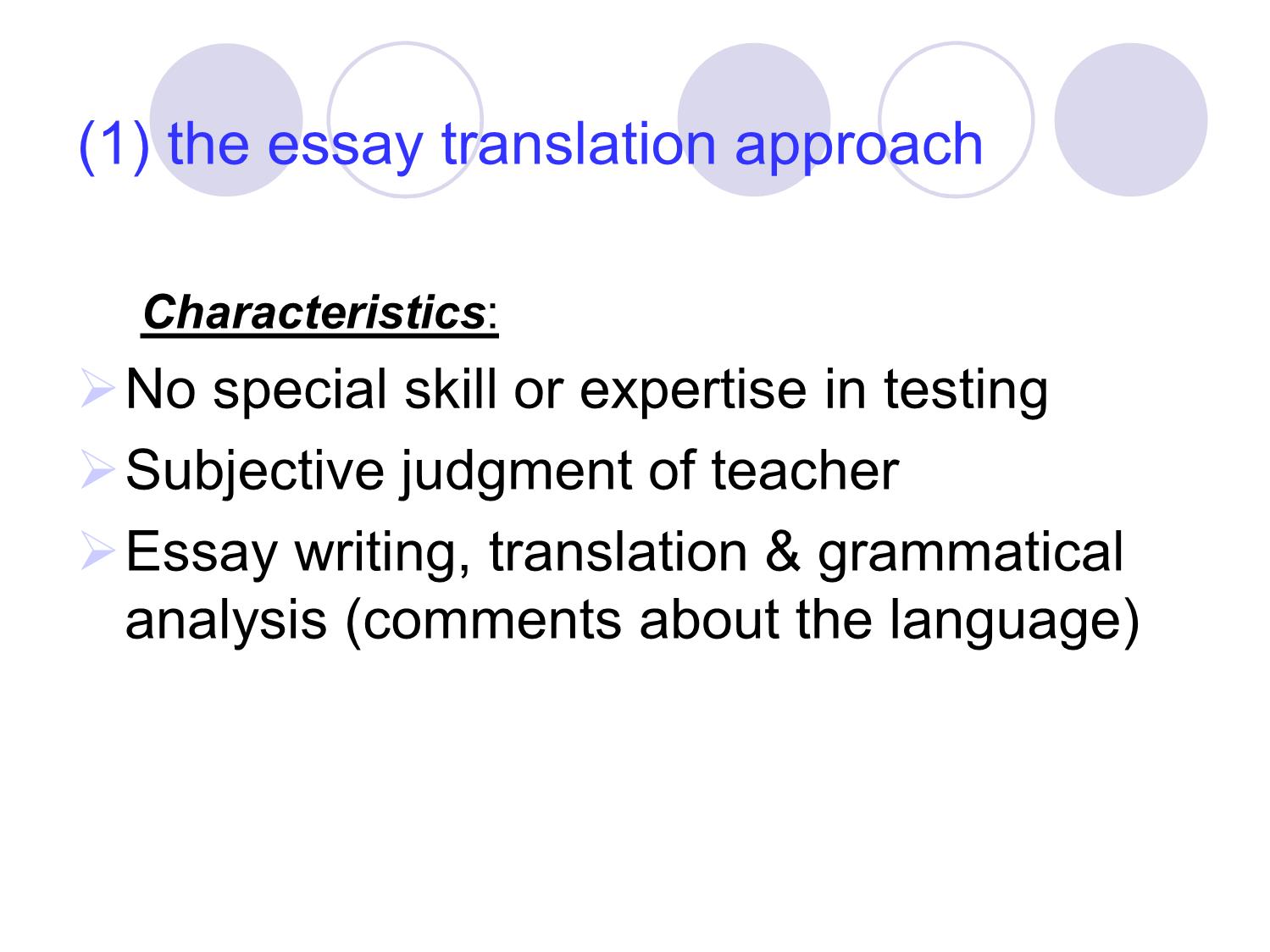
Trang 2
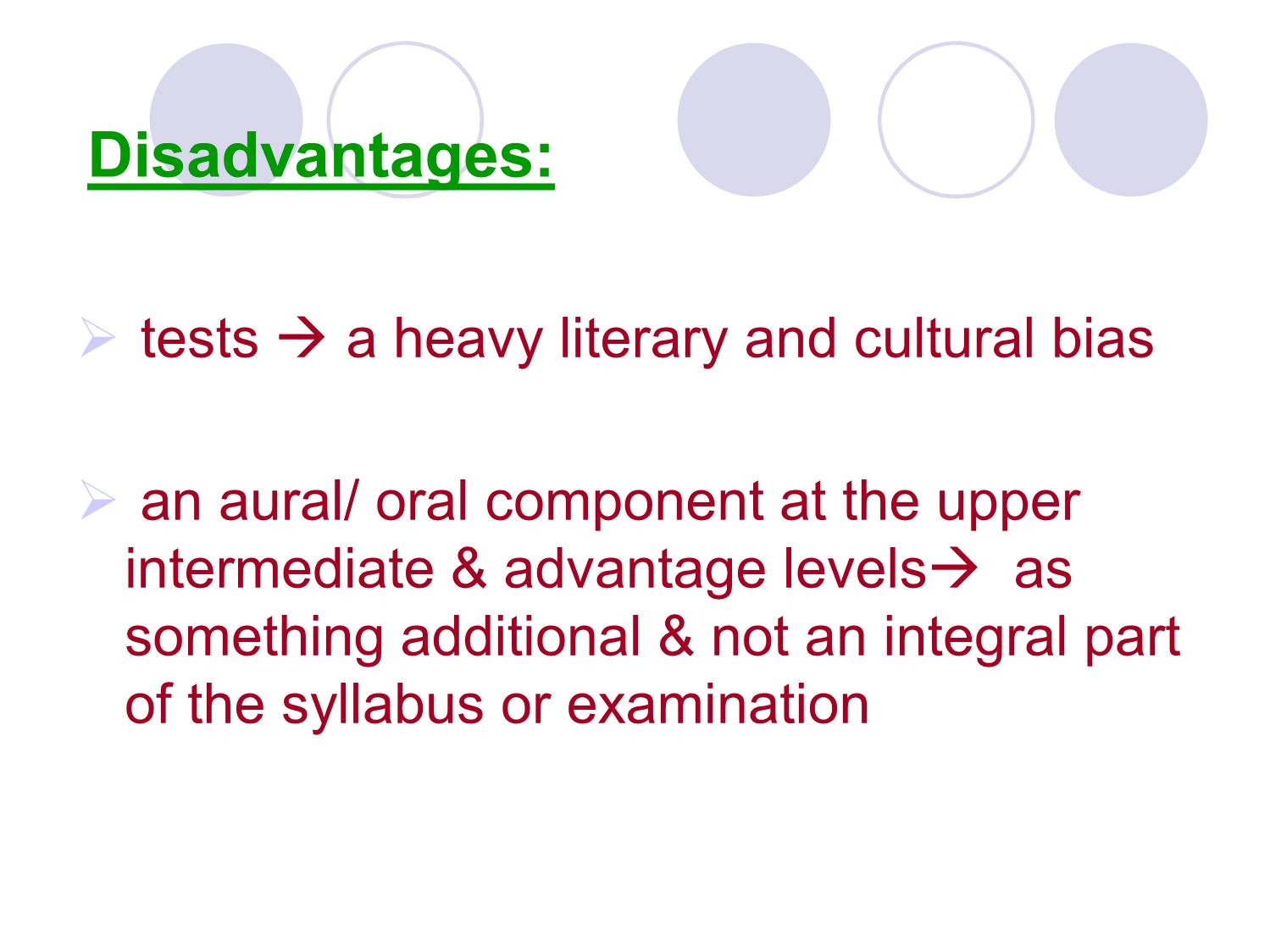
Trang 3
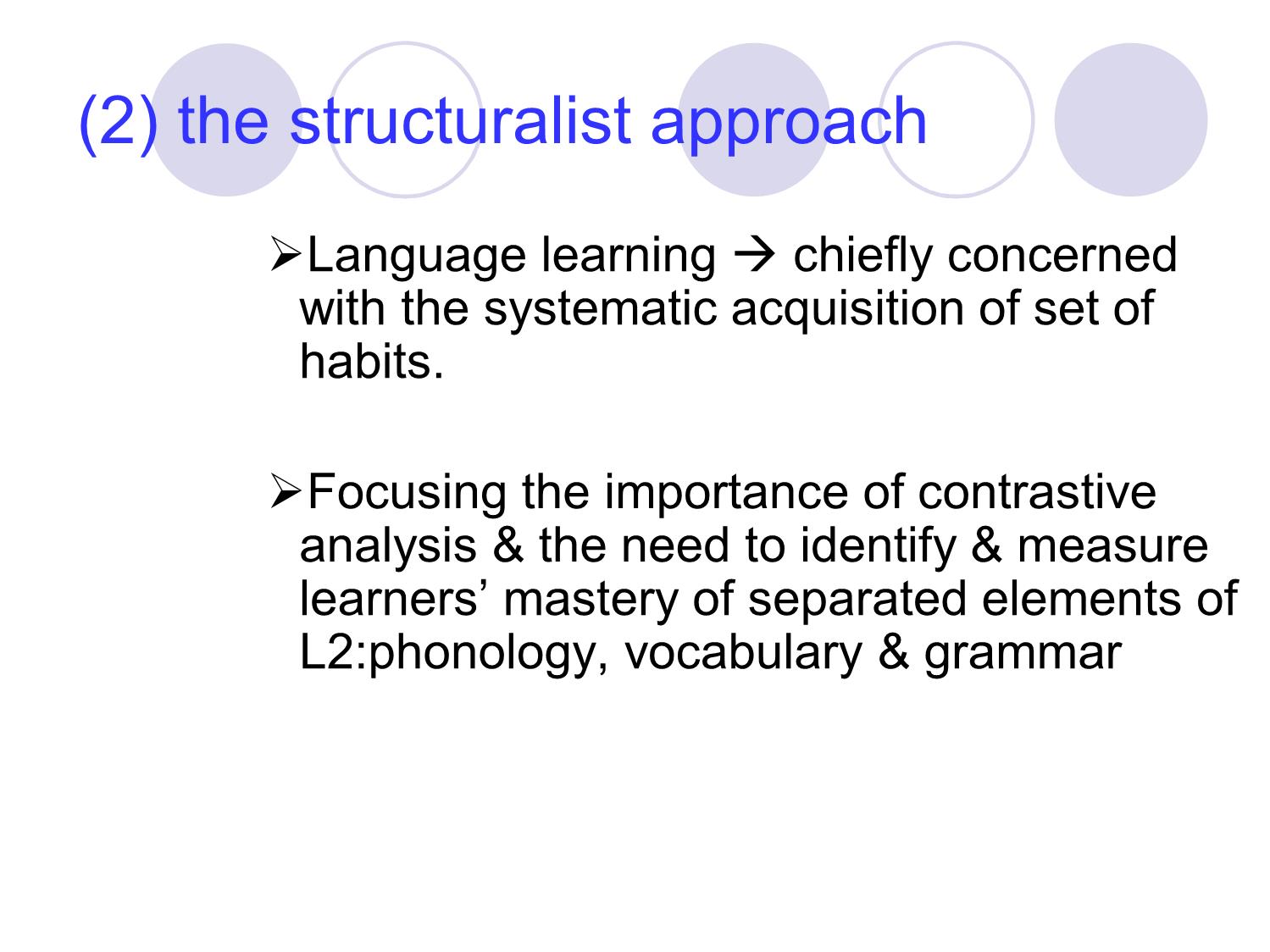
Trang 4
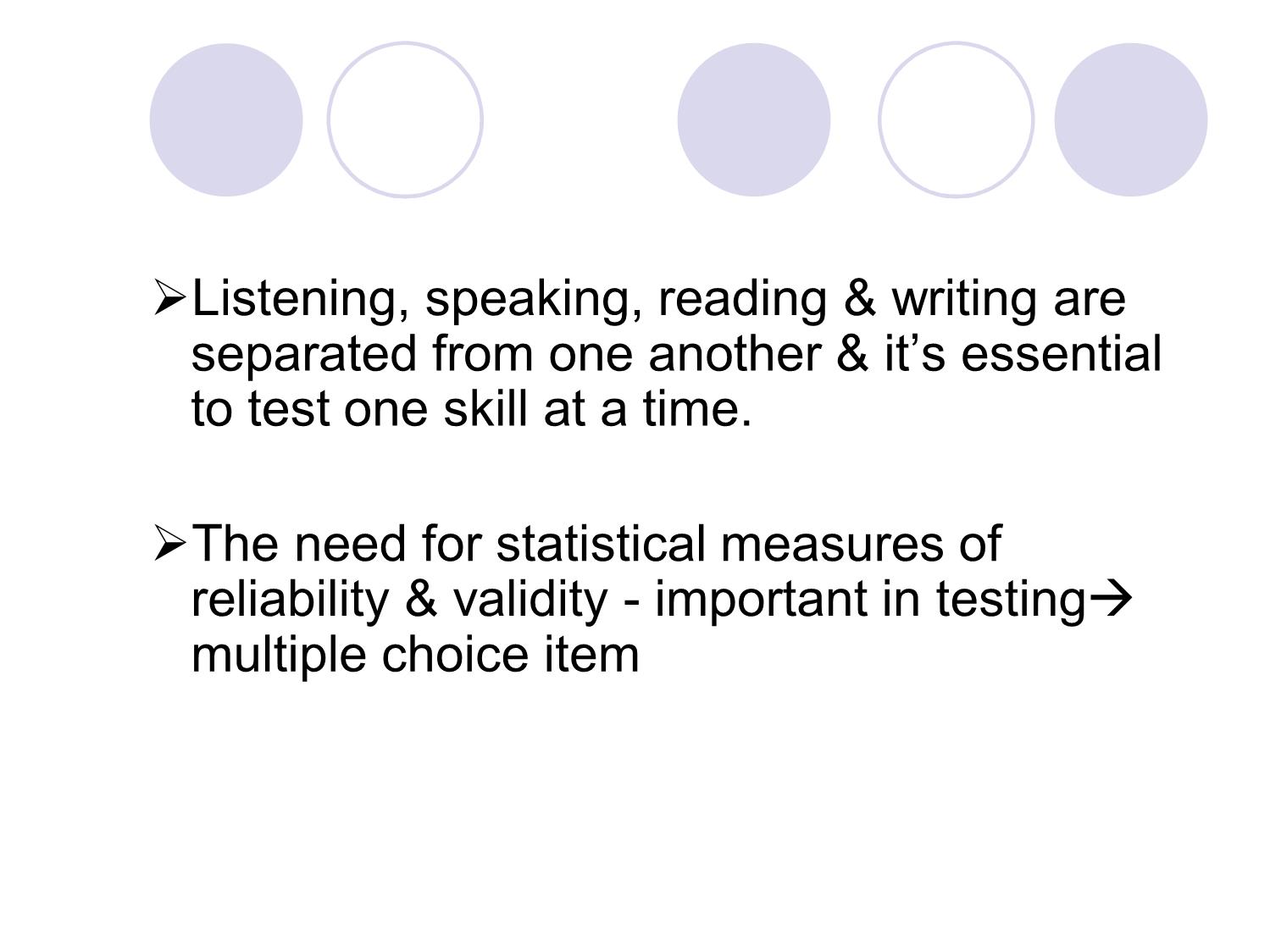
Trang 5
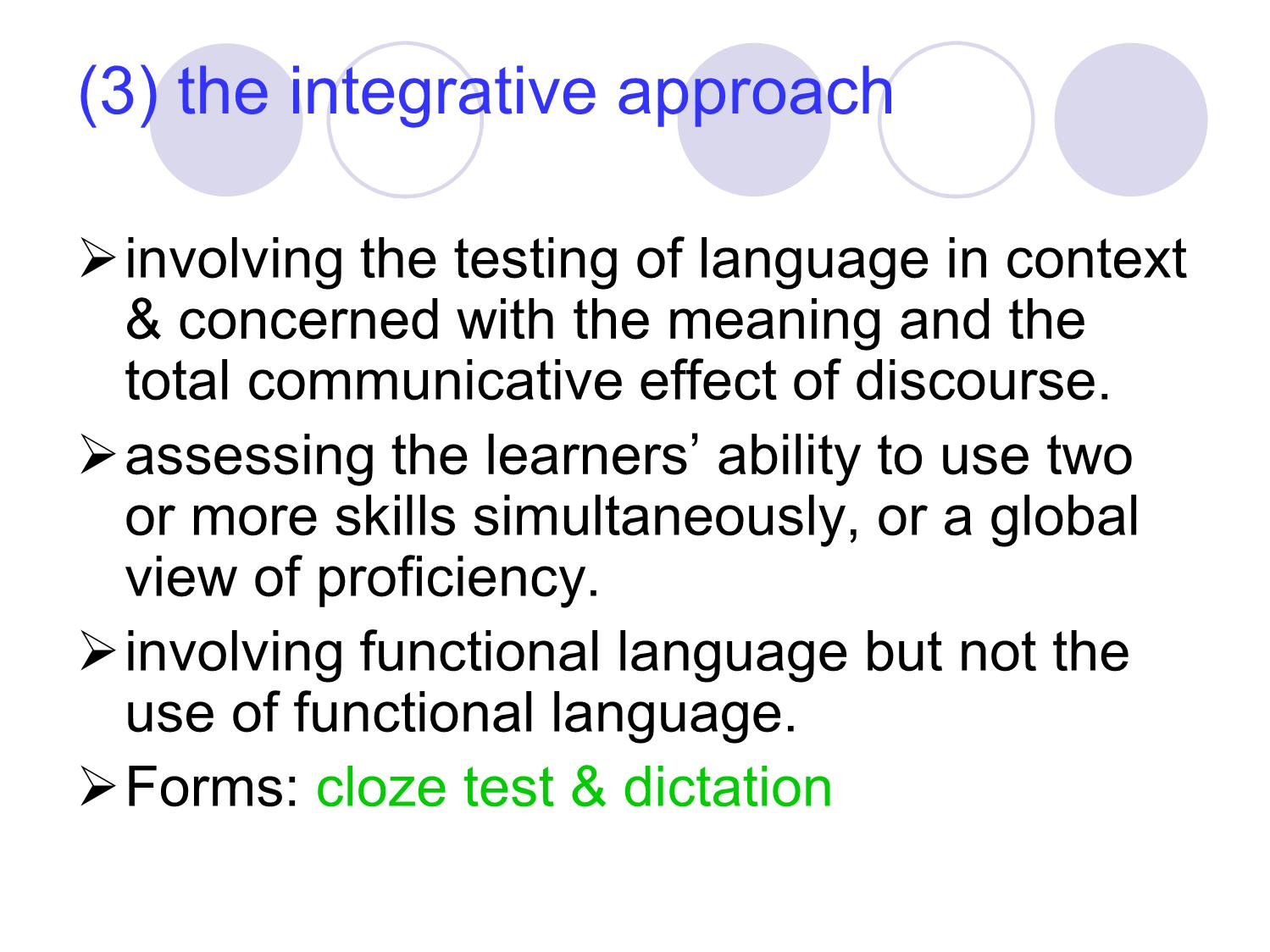
Trang 6
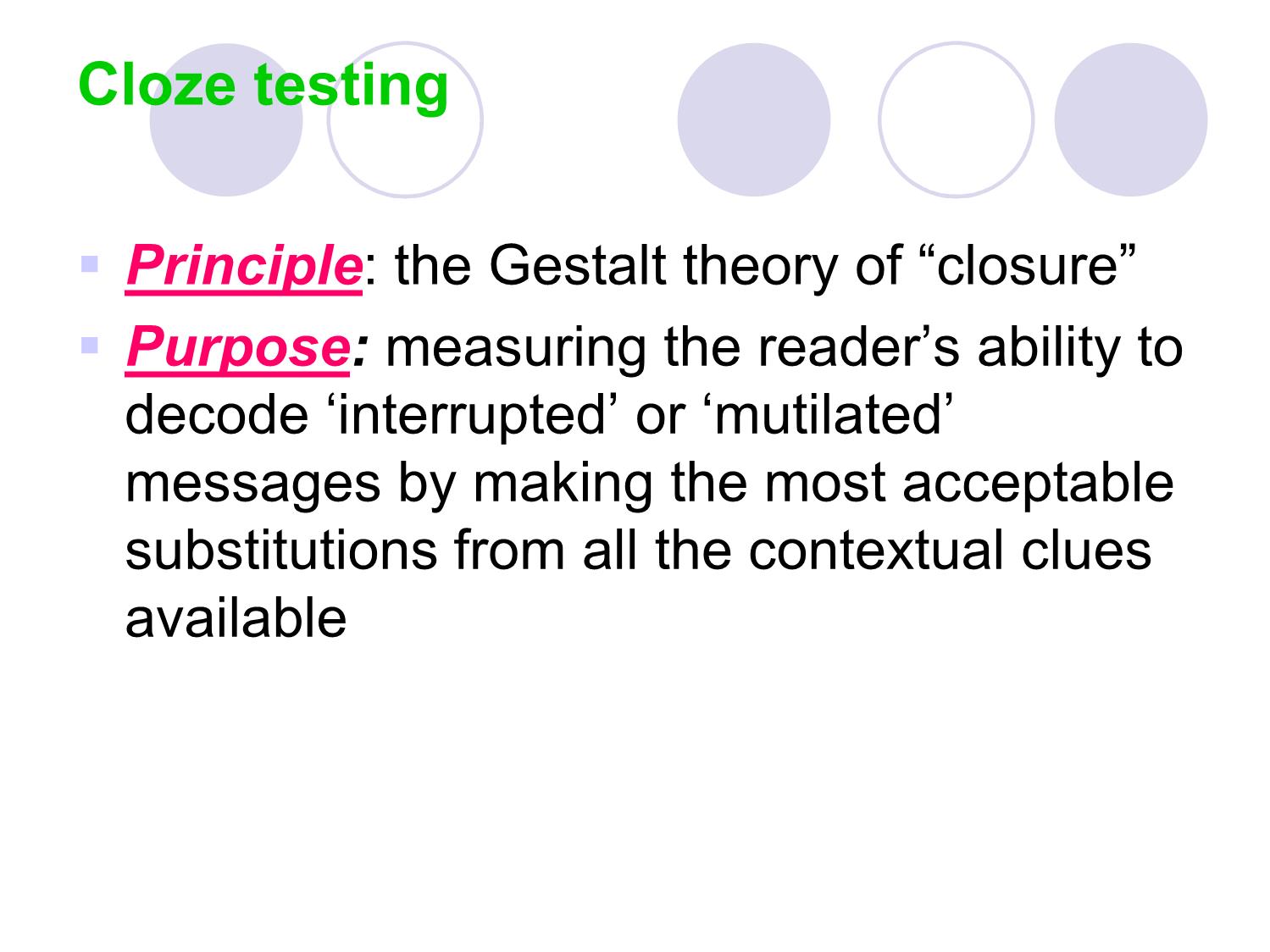
Trang 7
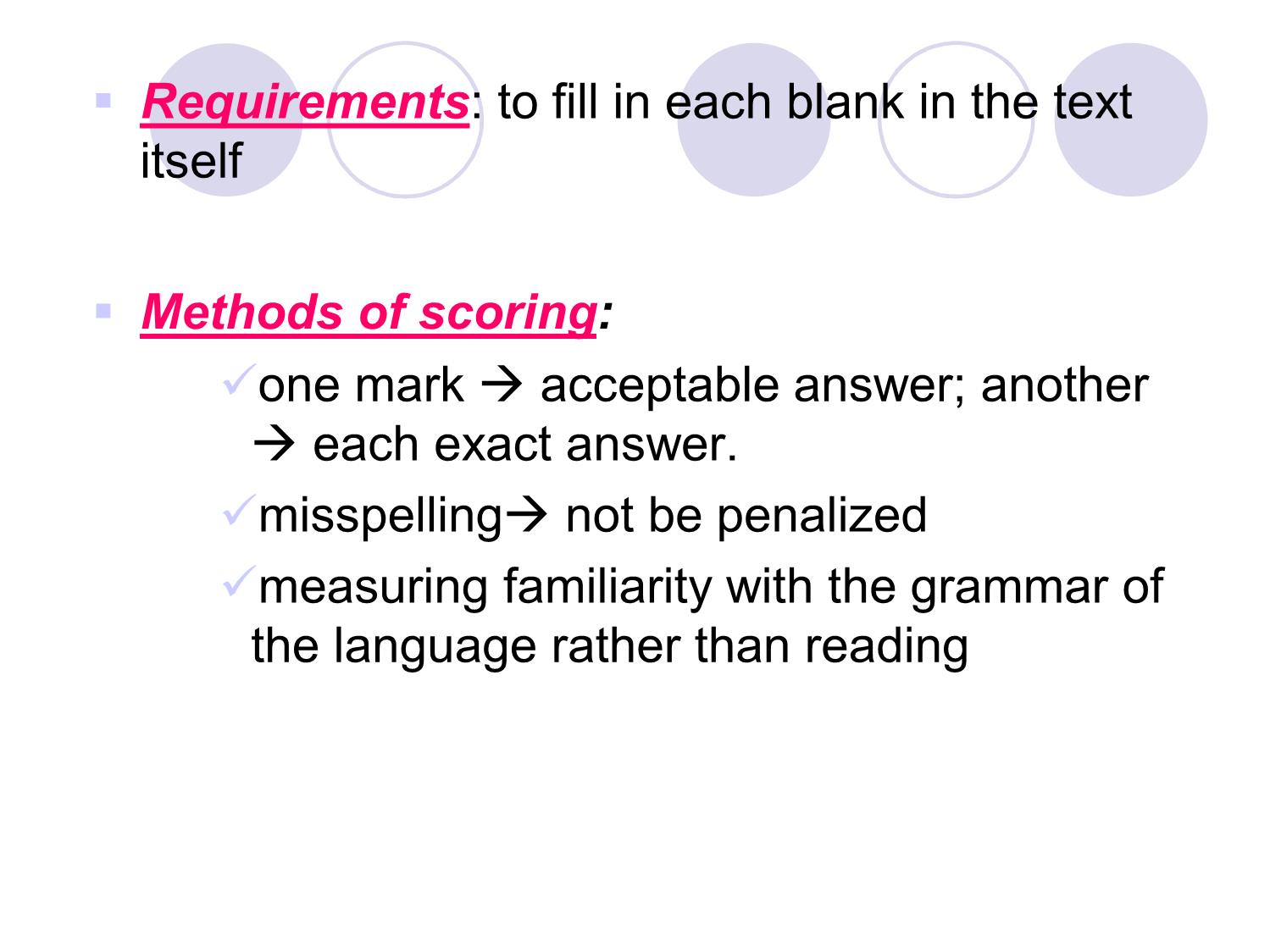
Trang 8
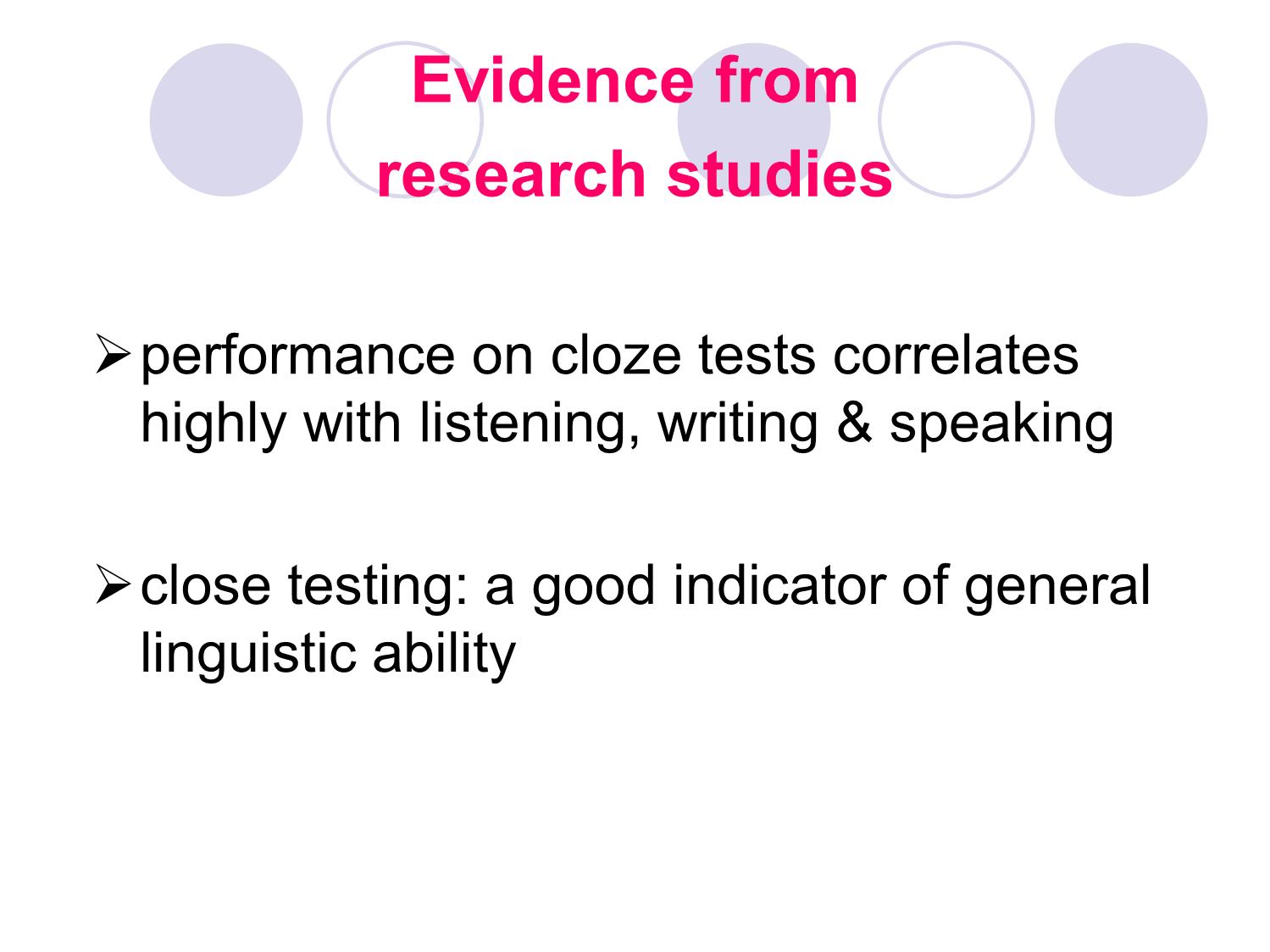
Trang 9
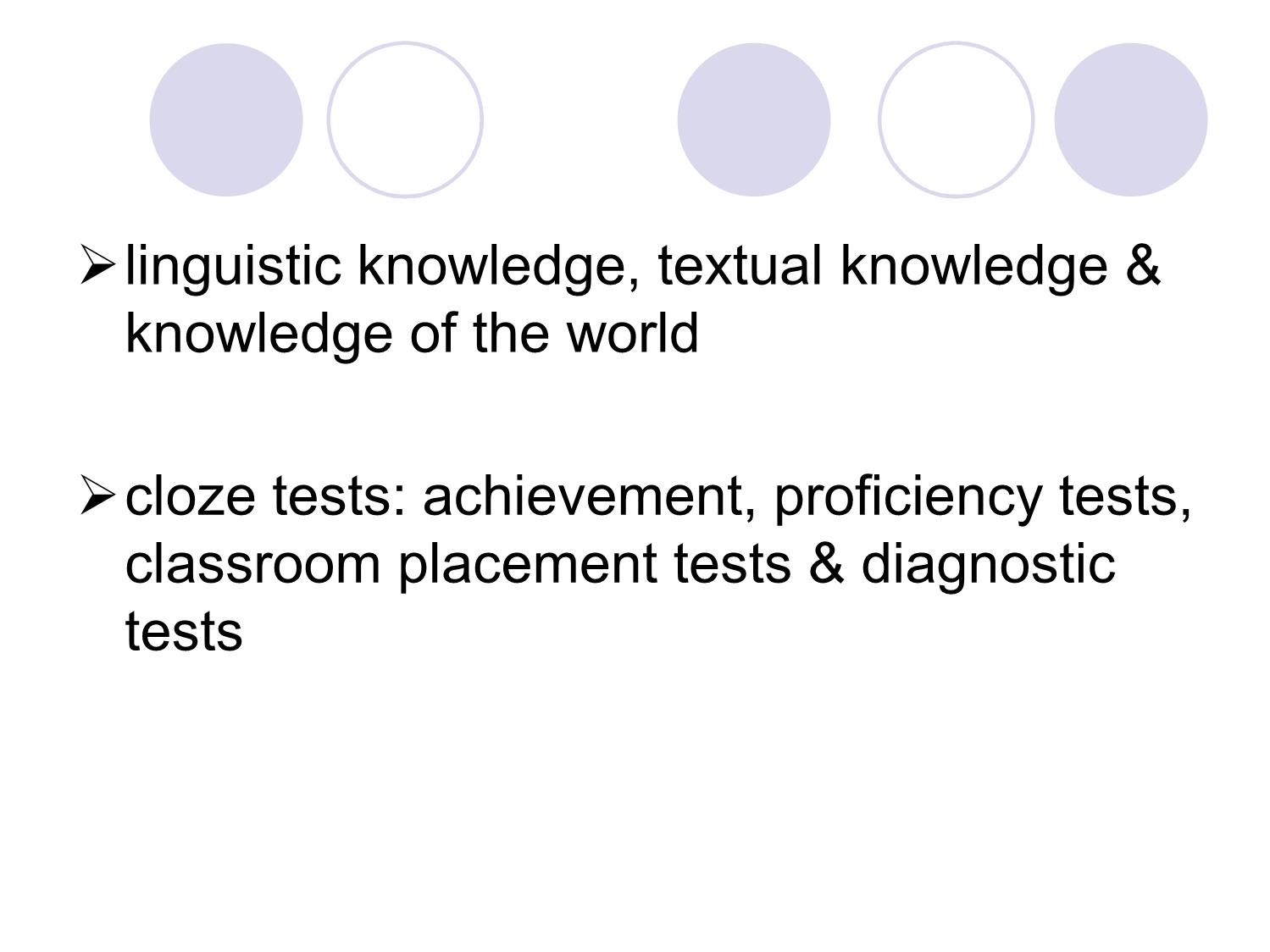
Trang 10
Tải về để xem bản đầy đủ
Bạn đang xem 10 trang mẫu của tài liệu "Bài giảng Phương pháp kiểm tra và đánh giá học tập - Chapter 2: Approaches to language testing", để tải tài liệu gốc về máy hãy click vào nút Download ở trên
Tóm tắt nội dung tài liệu: Bài giảng Phương pháp kiểm tra và đánh giá học tập - Chapter 2: Approaches to language testing
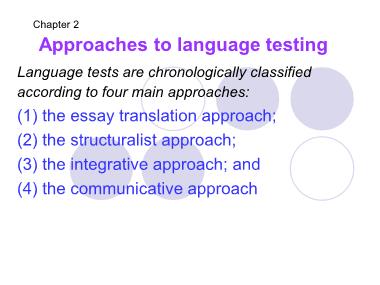
Chapter 2 Approaches to language testing Language tests are chronologically classified according to four main approaches: (1) the essay translation approach; (2) the structuralist approach; (3) the integrative approach; and (4) the communicative approach (1) the essay translation approach Characteristics: No special skill or expertise in testing Subjective judgment of teacher Essay writing, translation & grammatical analysis (comments about the language) Disadvantages: tests a heavy literary and cultural bias an aural/ oral component at the upper intermediate & advantage levels as something additional & not an integral part of the syllabus or examination (2) the structuralist approach Language learning chiefly concerned with the systematic acquisition of set of habits. Focusing the importance of contrastive analysis & the need to identify & measure learners’ mastery of separated elements of L2:phonology, vocabulary & grammar Listening, speaking, reading & writing are separated from one another & it’s essential to test one skill at a time. The need for statistical measures of reliability & validity - important in testing multiple choice item (3) the integrative approach involving the testing of language in context & concerned with the meaning and the total communicative effect of discourse. assessing the learners’ ability to use two or more skills simultaneously, or a global view of proficiency. involving functional language but not the use of functional language. Forms: cloze test & dictation Cloze testing Principle: the Gestalt theory of “closure” Purpose: measuring the reader’s ability to decode ‘interrupted’ or ‘mutilated’ messages by making the most acceptable substitutions from all the contextual clues available Requirements: to fill in each blank in the text itself Methods of scoring: one mark acceptable answer; another each exact answer. misspelling not be penalized measuring familiarity with the grammar of the language rather than reading Evidence from research studies performance on cloze tests correlates highly with listening, writing & speaking close testing: a good indicator of general linguistic ability linguistic knowledge, textual knowledge & knowledge of the world cloze tests: achievement, proficiency tests, classroom placement tests & diagnostic tests Dictation Purpose: previously regarded solely as a means of measuring students’ skills of listening comprehension. Auditory discrimination, the auditory memory span, spelling, the recognition of sound segments, a familiarity with grammatical and lexical patterning of the language, and overall textual comprehension good predicators of global language ability, but recent research has found that dictation tends to measure lower-order language skills- straightforward comprehension rather that high-order skills- inference. (4) the communicative approach concerned primarily with how language is used in communication Communicative competence achieved without a considerable mastery of grammar resulting in an attempt to obtain different profiles of a learner’s performance in the language The score obtained on a communicative test several measures of proficiency rather than simply one overall measure. Reflecting the culture of a particular country because of its emphasis on context and the use of authentic materials. Introducing the concept of qualitative modes of assessment in preference to quantitative ones
File đính kèm:
 bai_giang_phuong_phap_kiem_tra_va_danh_gia_hoc_tap_chapter_2.pdf
bai_giang_phuong_phap_kiem_tra_va_danh_gia_hoc_tap_chapter_2.pdf

